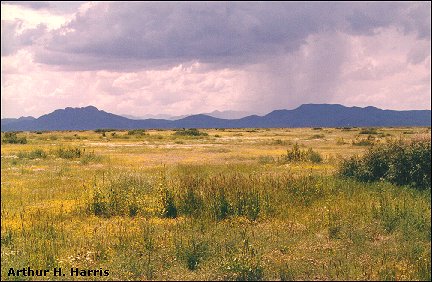

Did you know that there's a world-wide band of deserts, all at about the same distance north of the equator as our own Chihuahuan Desert? The Sonoran, Sahara, and Arabian deserts are only a few of these. But what could be causing these areas to be so dry, while other places are so lush?
Strange as it may seem, all this is due to rising and falling masses of air! Air, warmed near the equator, billows upward, dropping most of its water in the process. Carried northward, that same air starts to sink, heating up as it does so. Since it has already given up most of its moisture, the warming air is more likely to absorb liquid than provide it—a major reason rain is rare and water evaporates so quickly in our desert.
The many arid lands at our latitude make a strong statement about the
power of this rising and falling of air. Clearly, this is a force that affects the
whole planet.

Listen to the Audio (mp3 format) as recorded by KTEP, Public Radio for the Southwest.
Contributor: Robert H. Schmidt, Department of Geological Sciences, University of Texas at El Paso.
Desert Diary is a joint production of the Centennial Museum and KTEP National Public Radio, University of Texas at El Paso.

Desert rain, Hidalgo Co., NM. Photograph by Arthur H. Harris.
Riley, D., and L. Spolton. 1974. World Weather and Climate. Cambridge University Press, London, 120 pp.